One thing I love about SE Asia is that anywhere I turn, I can get a coconut______(fill in the blank). While perusing the massive Sunday market at Chatuchak in Bangkok I had a coconut and sticky rice ice cream served up in a coconut shell. It was the best combination of flavor and texture my mouth has ever experienced. With that said, earlier that day I had the chance to see for myself how coconut sugar is made at the Coconut Sugar Farm an hour outside of Bangkok.
Learn Thai: maprao means coconut in Thai
Coconut sugar comes from the coconut flowering tree, that does in fact have coconuts. Palm sugar is also popular in Southeast Asia, but it comes from palm trees that do not grow coconuts, but instead grow dates.
Coconut sugar has become a popular alternative to white sugar when it comes to cooking and baking because it’s not extremely sweet, is natural and has some nutritional value like potassium, magnesium, zinc, and iron, however in small amounts because it is after all sugar and consuming too much of it is not a healthy choice.
I was excited to see the process of making coconut sugar first hand at the Coconut Sugar Farm in Samut Songkhram and realized that it requires a lot of labor and a lot of waiting to make it perfect. The end result is a tasty coconut syrup and crystallized coconut sap which you can eat like a piece of candy.
The Coconut Sugar Factory is within the Damnoen Saduak floating market so it will be one of the stops you can take if you decide to float down the market in a boat and do some shopping.
Sap from the coconut tree gets collected into containers that are left on the stem of the leaves until the container is filled.
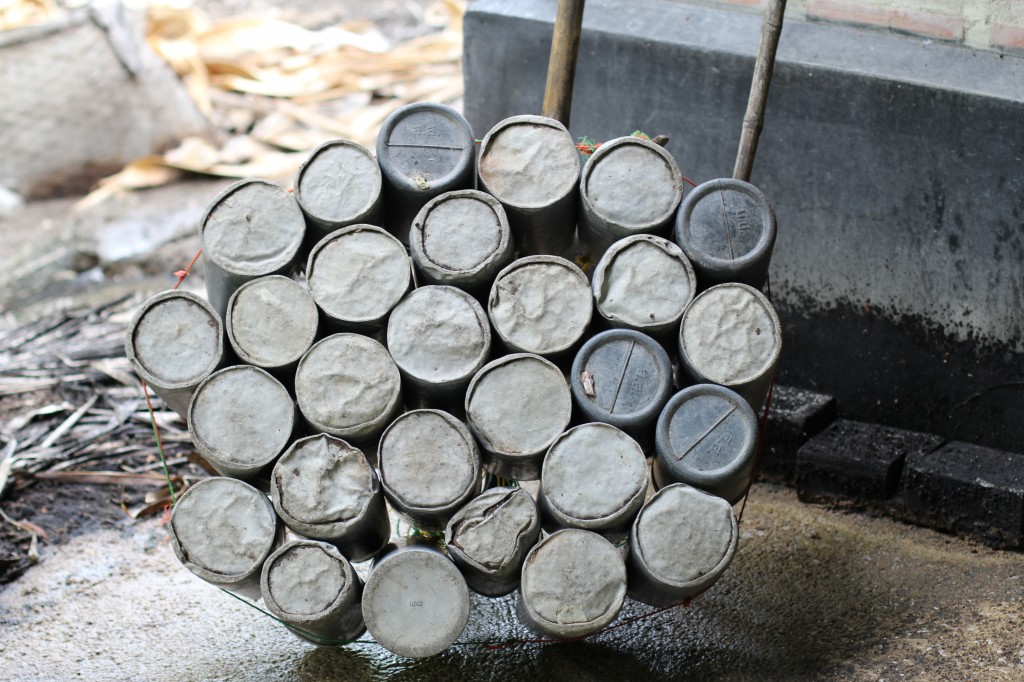
The sap collected from these containers are poured into metal bowls so that the sap can be boiled until it turns into a sticky gum-like texture. Once it hardens, the gooey sap becomes “crystallized” and ready to use as sugar.
Eventually the syrup will harden and become a sticky gum-like texture and have a caramel color to it. Once it’s done boiling, the sap will be poured into plastic containers to dry and harden. Eventually it will be crush or granulated for cooking purposes.
The Crystallized sap left over in the flowering stem of a coconut palm tree can be scraped out after all of the syrupy sap has seeped out. It can take up to 30 to 40 days for all of the sap to flow out of the stem so one tree can produce a lot of sugar! You can even eat the crystallized sap straight out of the stem and it’s actually really tasty, not too sweet and a bit like a caramel treat. You can buy a bag of coconut sugar in its crystallized form for 50 baht which is about $1.25 USD.
Do you use coconut sugar as a sweetener instead of regular white granulated sugar? What’s your take on this tasty alternative?
If you enjoyed this post, why don’t you follow Adrift Anywhere on Facebook or subscribe to get updates on budgeting tips, travel advice and tips!

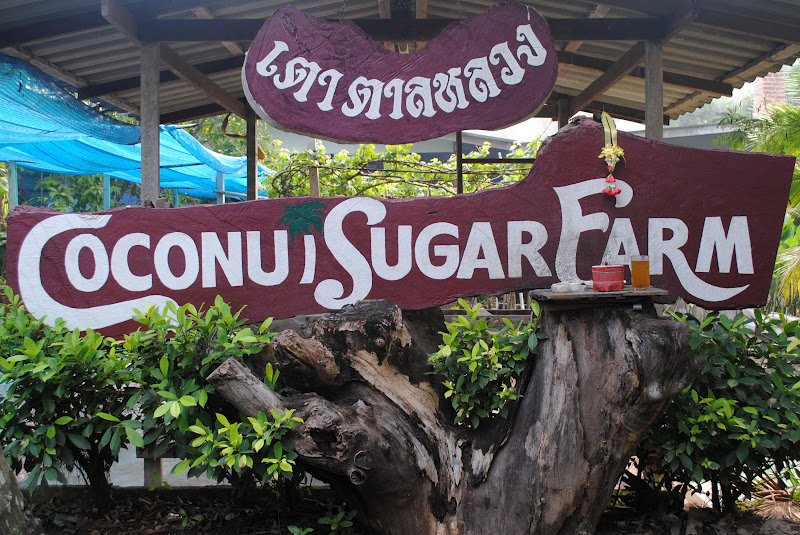
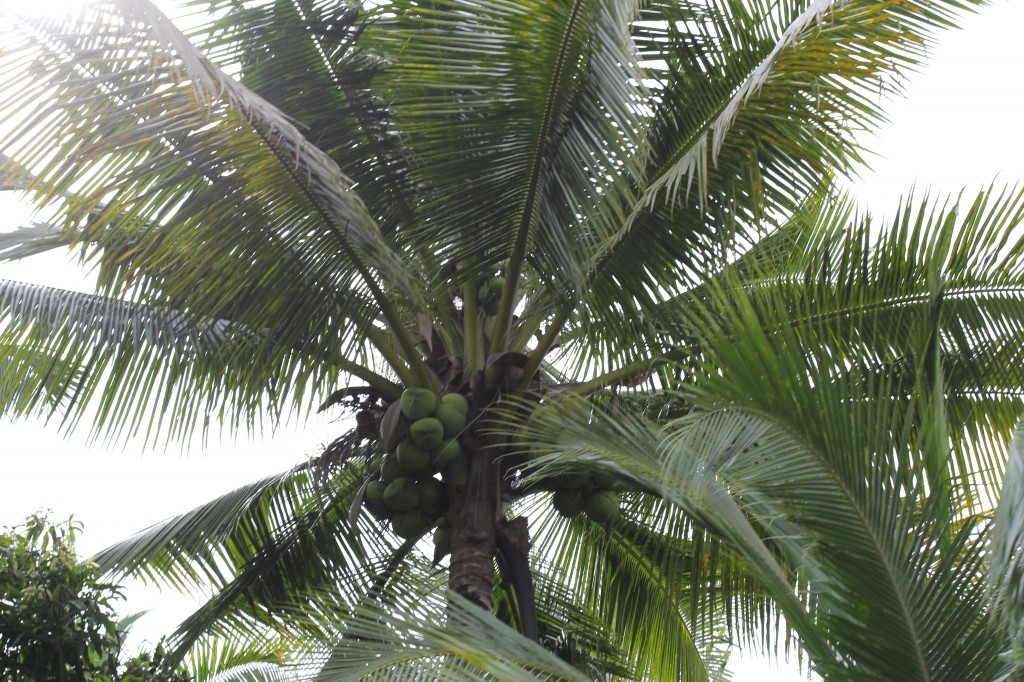
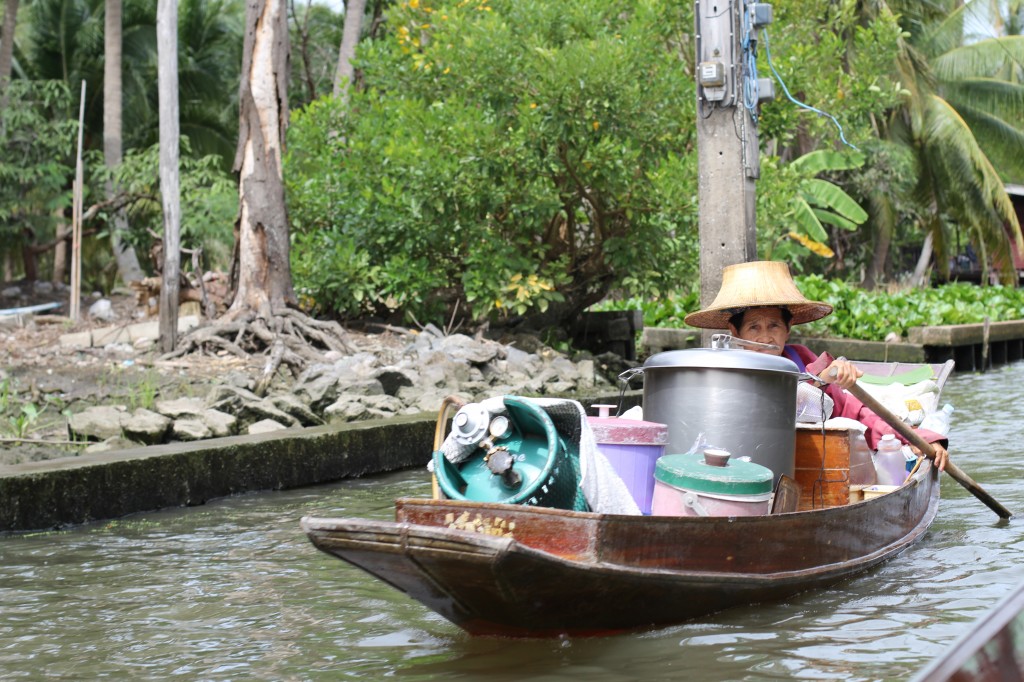
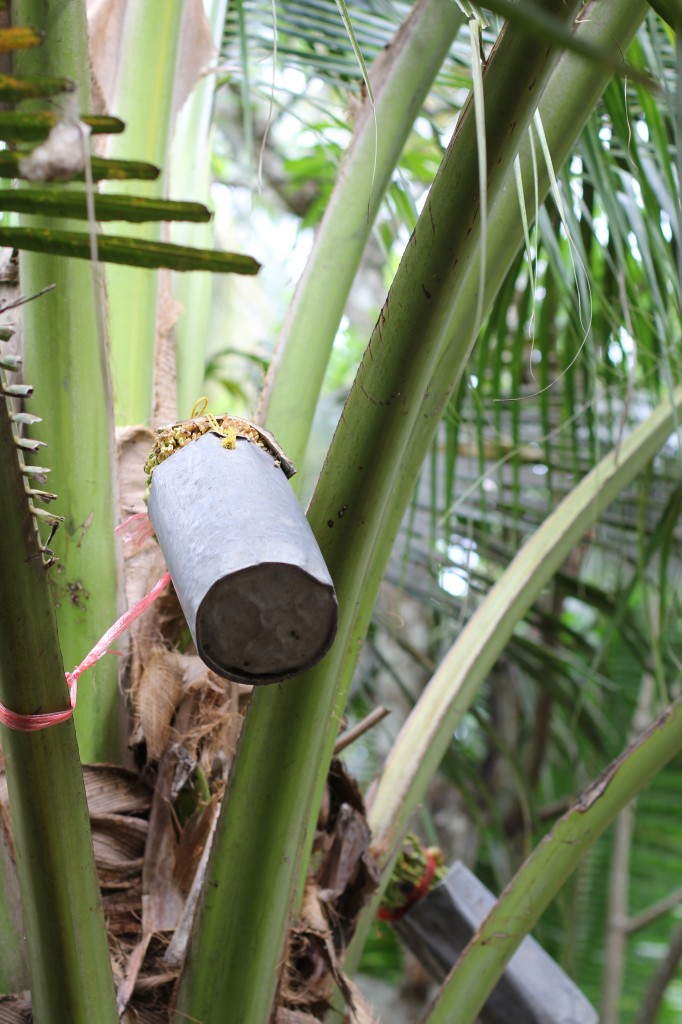
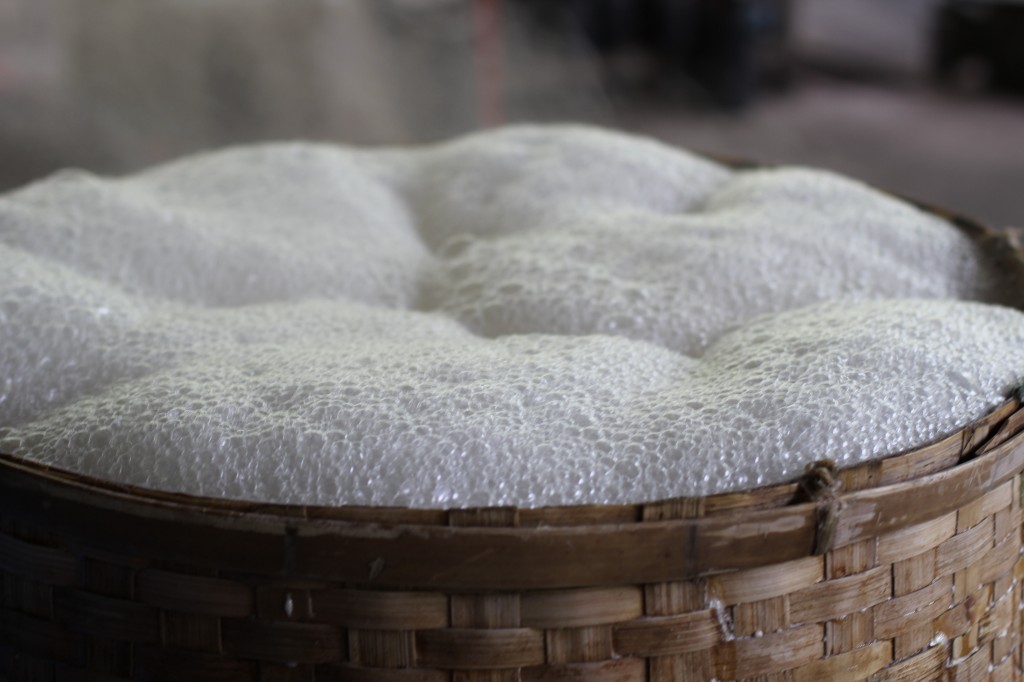
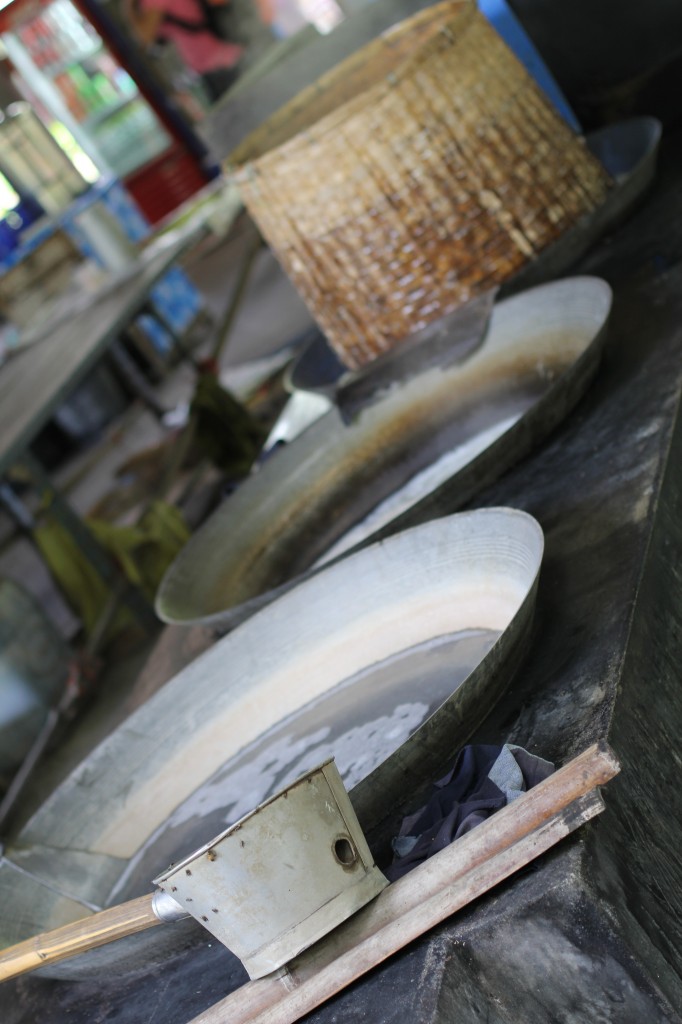
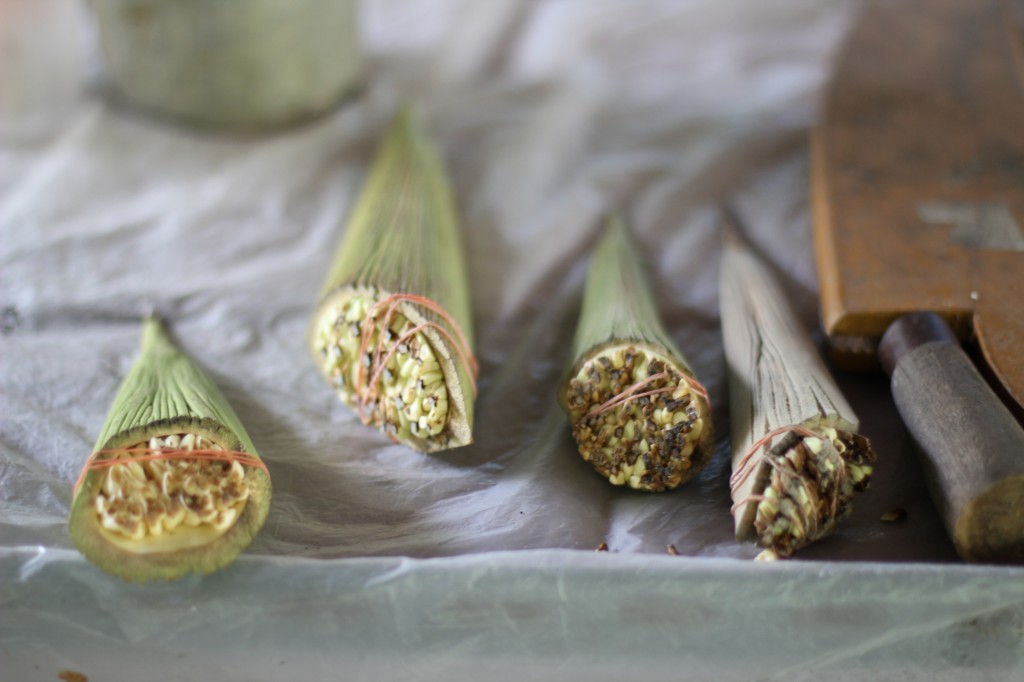
We too love the availability of __ coconuts (our blank would be drinking)! That said, coconut candy isn’t bad either!
Coconut in any way is so yum!
Hi! I love the way you presented your love story of the coconut nectar/toddy turned into the famous–COCO SUGAR, which is so expensive due to its laborious procedure. Congratulations! You got me wanting to see the factory itself. Is it possible to have a hands-on experience at the said factory? I tried twice here in my country with my cousins first and second with my Research students way back 2015..but failed. I got the irreversible and very hard chewy candy with the nougat hardness! I want to learn how to do it properly this time. Please advise me on how to get there the cheapest way possible as I am also trying to get in touch with Robert White and wife Sunan for their aquaponics. Haven’t got a reply yet.
I pray all these can fit in my very short stay from November 3-6, 2017.
Thank you so much and am looking forward to more stories about your travels.
Godspeed!